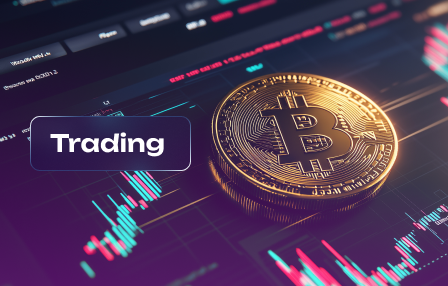Signs of a trustworthy crypto exchange
May 10, 2025
When choosing a crypto exchange, prioritize reliability. Look for platforms with positive user reviews, indicating consistent performance and trustworthiness. An exchange’s reputation can often be gauged through community feedback on forums and social media, which reflects users’ experiences regarding transactions and customer support.
Regulation plays a critical role in assessing an exchange’s reliability. Ensure the platform complies with local laws and regulations, as regulated exchanges are more likely to implement robust security measures. This includes data protection protocols that safeguard user information and funds against unauthorized access.
Security features should be non-negotiable when selecting an exchange. Verify the presence of two-factor authentication, cold storage for assets, and insurance policies to cover potential breaches. A transparent approach to security not only enhances user confidence but also indicates the platform’s commitment to protecting its clients.
The level of liquidity is another key factor. High liquidity ensures that trades can be executed swiftly without significant price fluctuations, which is particularly important during volatile market conditions. Research the trading volume and market depth before committing to any platform.
Support services must be reliable; 24/7 availability is ideal for addressing issues as they arise. Responsive customer service channels reflect a platform’s dedication to user satisfaction and problem resolution.
Transparency regarding fees, terms of service, and operational practices builds trust between the exchange and its users. Investigate whether the exchange discloses its fee structure clearly, as hidden charges can erode profitability over time.
An assessment of the underlying technology, including the platform’s interface, speed, and efficiency, will further guide your choice. A well-designed trading environment contributes significantly to a seamless trading experience.
Security Measures Assessment
To evaluate the security of a crypto exchange, begin by examining its use of advanced encryption technologies like SSL/TLS protocols. These measures protect user data and transactions from unauthorized access. Check for two-factor authentication (2FA) options, as they significantly enhance account security by requiring an additional verification step during login.
Regulatory compliance is another critical aspect; exchanges adhering to industry regulations demonstrate a commitment to maintaining high security standards. Assess whether the exchange undergoes regular third-party audits, which ensure transparency in its operations and bolster user trust.
Review the exchange’s insurance policies regarding digital assets. Some platforms offer coverage against potential losses due to hacking or system failures, providing an extra layer of protection for users’ funds.
Liquidity plays a role in security; higher liquidity indicates that the exchange can handle sudden market fluctuations without issues, reducing the risk of price manipulation that could compromise user safety. Monitor community feedback and reviews concerning past security incidents to gauge reliability.
The quality of customer support should not be overlooked; prompt response times and effective resolution of issues can prevent minor problems from escalating into significant security threats. Choose platforms with multiple support channels such as live chat, email, and phone assistance.
Lastly, examine withdrawal processes and fees associated with them. Security measures should extend to withdrawal requests–look for features like withdrawal whitelists or delays on new addresses to prevent unauthorized transfers.
User Experience Evaluation
Focus on user experience by evaluating the following key aspects:
- Fees: Analyze trading, withdrawal, and deposit fees. Look for transparent fee structures that allow for easy comparison with other exchanges.
- Liquidity: Review liquidity levels for various trading pairs. High liquidity ensures smoother transactions and minimizes slippage.
- Support: Test customer support responsiveness through multiple channels (email, chat, phone). Reliable exchanges offer quick resolutions to issues.
- Security: Investigate security features such as two-factor authentication (2FA), cold storage of funds, and insurance policies against breaches.
- Reliability: Check the platform’s uptime history and performance during high volatility periods. Consistent operation is critical for effective trading.
- Reviews: Read user feedback on platforms like Trustpilot or Reddit. Pay attention to recurring themes in positive and negative reviews.
- Technology: Assess the exchange’s technology stack. A robust platform with regular updates indicates a commitment to improving user experience.
- Regulation: Ensure the exchange complies with relevant regulations in your jurisdiction. Regulatory compliance enhances trustworthiness.
- Transparency: Evaluate how openly the exchange communicates its policies, fees, and changes. Clear communication builds user confidence.
This evaluation allows users to identify exchanges that prioritize their experience while ensuring security and reliability in transactions.
Liquidity and Trading Volume
Choose exchanges with high liquidity to ensure quick execution of trades. Liquidity is a fundamental aspect that impacts price stability and trading efficiency. A platform’s ability to handle significant transaction volumes without affecting prices is essential for both day traders and long-term investors.
Evaluate the trading volume of an exchange over different time frames. Consistently high trading volume indicates strong market interest and can lead to tighter bid-ask spreads, enhancing potential profitability. Look for platforms that publish transparent volume statistics regularly.
Your selection should also consider user reviews and the overall reputation of the exchange within the crypto community. Platforms with positive feedback regarding their liquidity and trading capabilities often provide better support during periods of high volatility.
Avoid exchanges with low liquidity as they may result in slippage during trades, increasing costs unexpectedly. Regularly monitor liquidity metrics alongside security features and customer service responsiveness to assess reliability comprehensively.
Regulatory Compliance Check
Verify the regulatory status of a crypto exchange before engaging. Look for exchanges that are licensed or regulated by reputable authorities, such as the Financial Conduct Authority (FCA) in the UK or the Securities and Exchange Commission (SEC) in the USA. This licensing demonstrates adherence to legal standards, enhancing reliability.
Examine user reviews and feedback regarding an exchange’s compliance history. Pay attention to any incidents of regulatory violations or fines imposed. A strong reputation among users can indicate a commitment to following regulations and maintaining security practices.
Assess how transparent the exchange is about its operations, including fees and liquidity provisions. Exchanges that provide clear information on these aspects typically show a greater commitment to ethical standards and customer trust.
Check for KYC (Know Your Customer) and AML (Anti-Money Laundering) policies. Exchanges with robust compliance measures often require identity verification, which enhances security against fraudulent activities. Lack of such measures can be a red flag.
Stay informed about regulatory changes in different jurisdictions affecting crypto trading. An exchange that actively adapts to new regulations is likely more reliable and stable long-term compared to those that resist compliance.
Finally, consider the technological infrastructure supporting regulatory compliance efforts. Advanced systems for monitoring transactions can enhance security while ensuring adherence to regulations, further solidifying an exchange’s reputation in the market.



